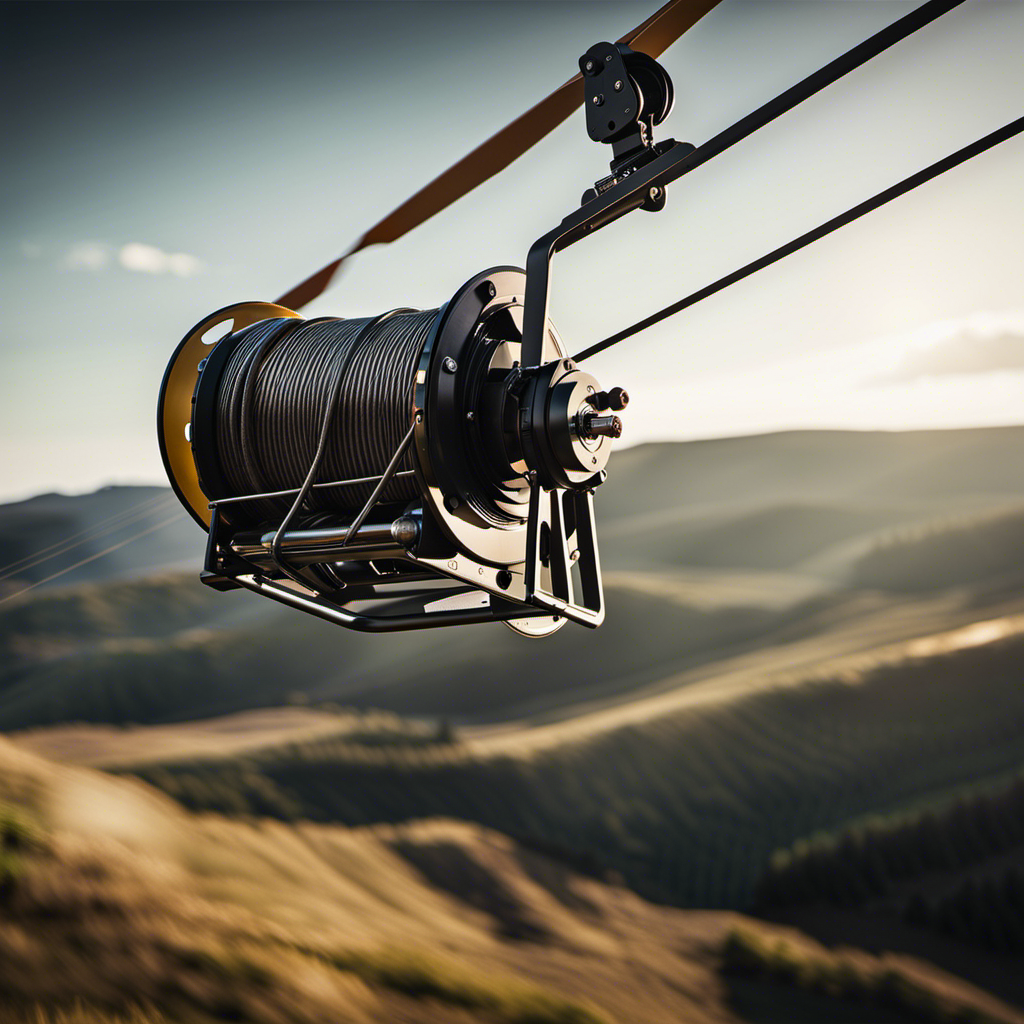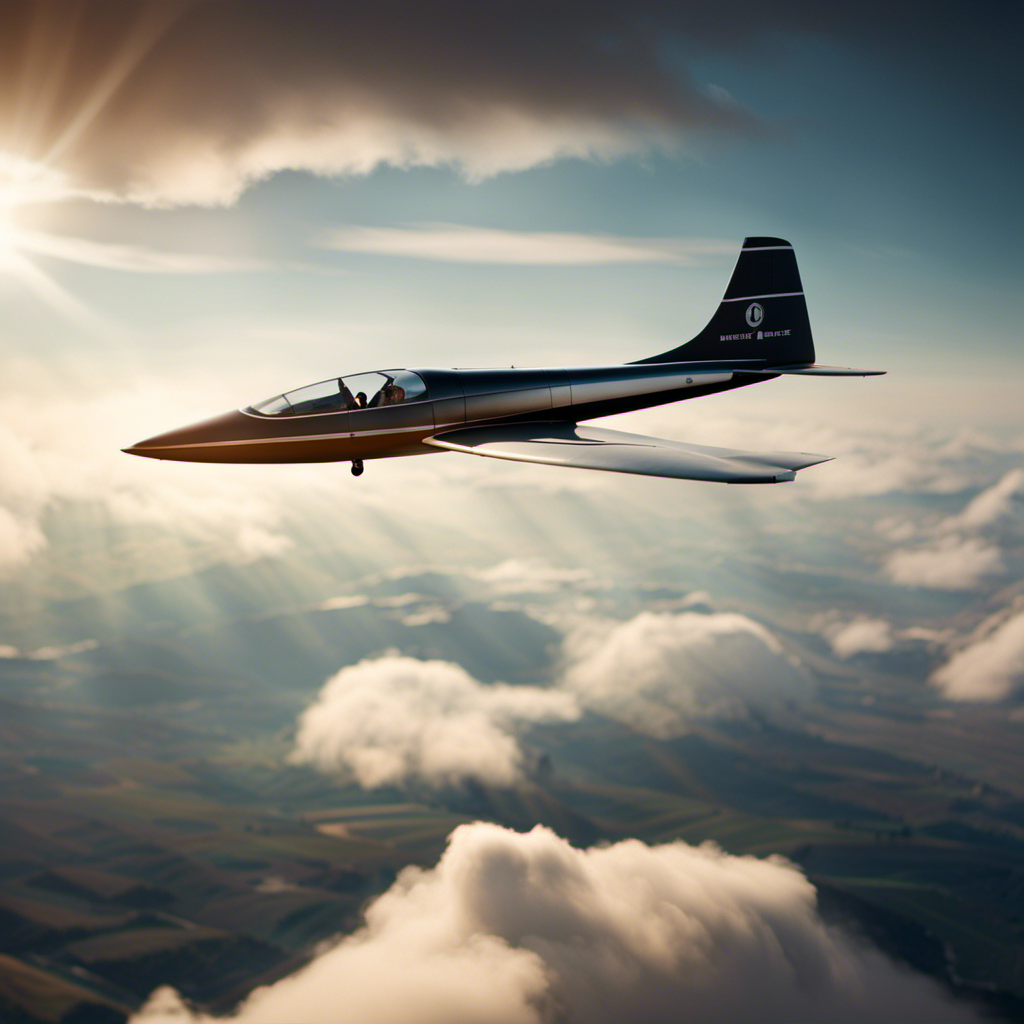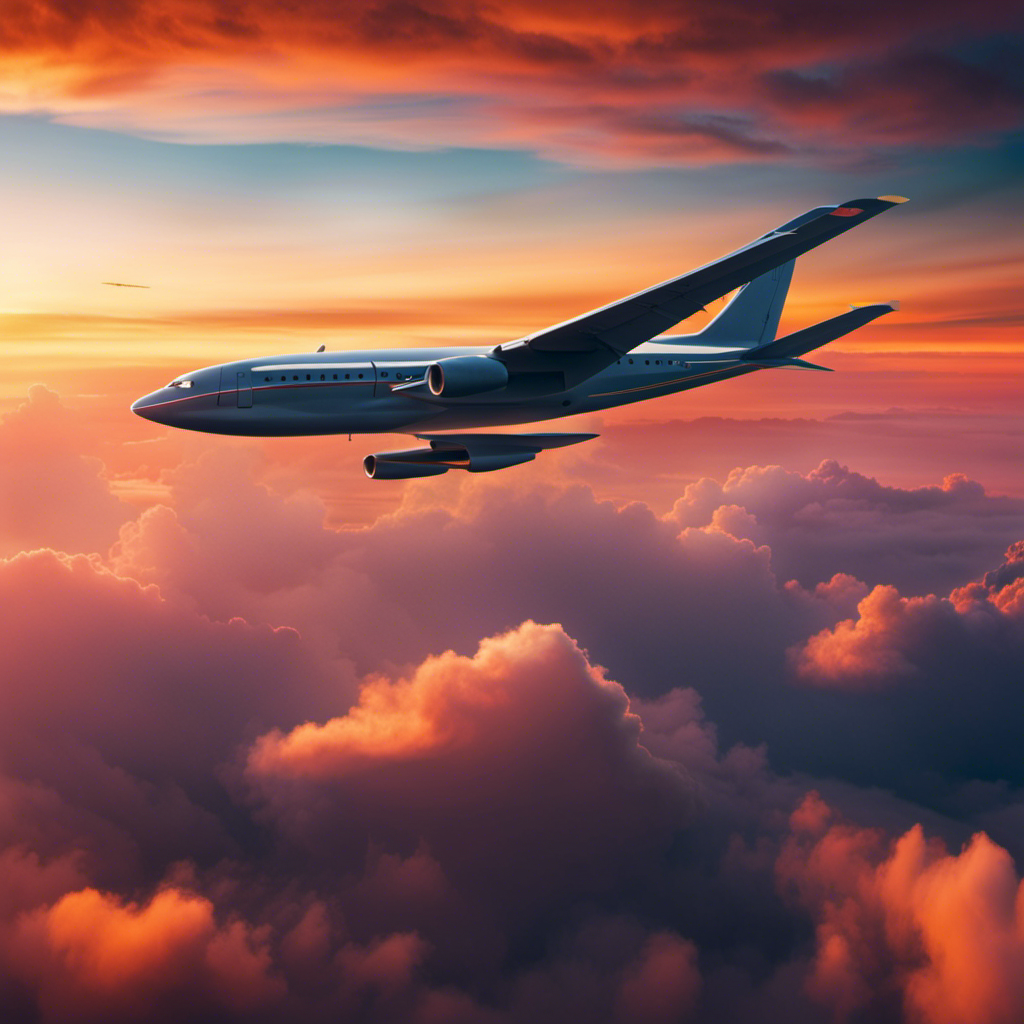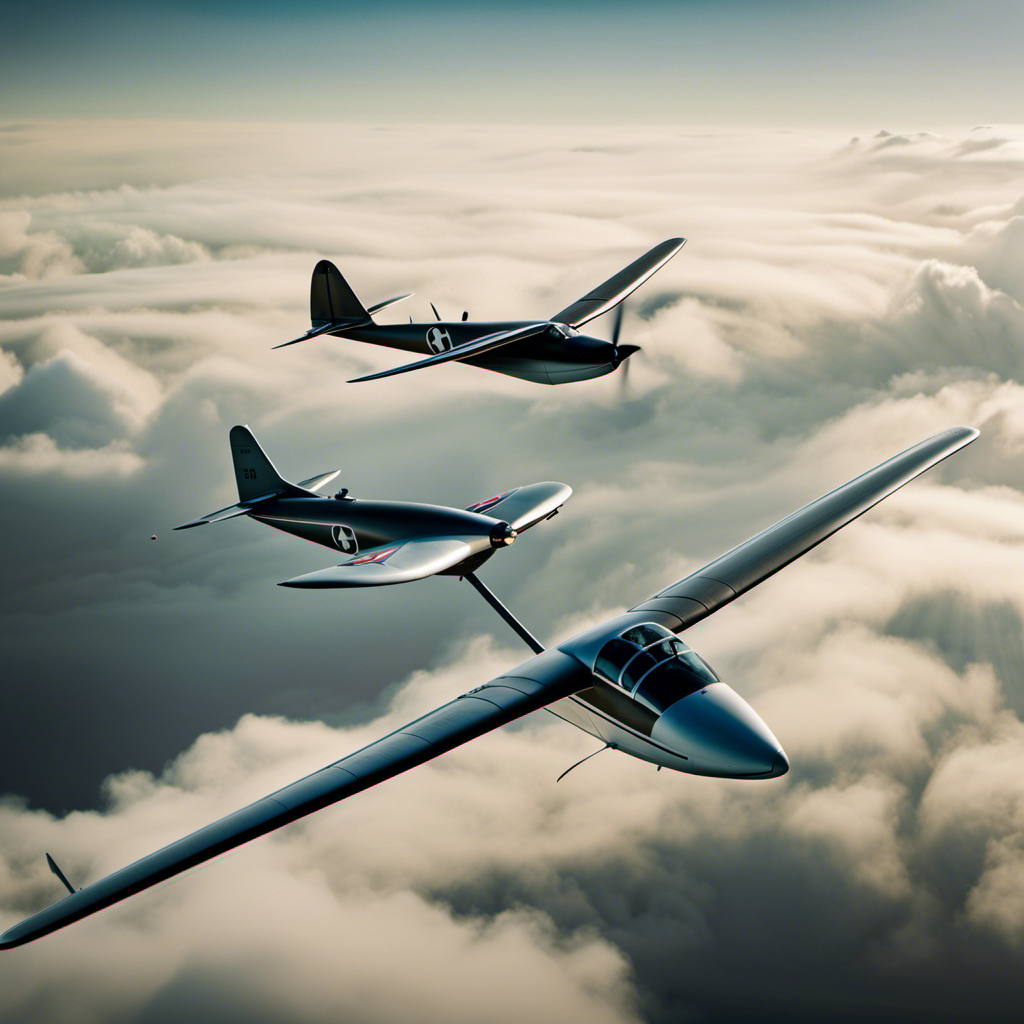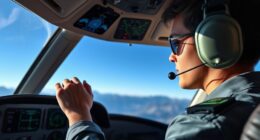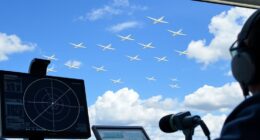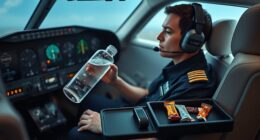Being a pilot is anything but easy. The physical demands and the requirement to maintain health and fitness are aspects that many people do not realize. From the challenges of flying to the stringent health regulations, the life of a pilot is definitely not easy.
But don’t worry, I’ve got you covered. In this article, I’ll delve into the occupational hazards, the impact on vision and hearing, and even the psychological and emotional challenges that pilots face.
So, fasten your seatbelts and prepare to explore the hidden realities of being a pilot.
Key Takeaways
- Being a pilot can have physical demands and occupational hazards, such as long hours of sitting, poor circulation, and muscle stiffness from prolonged sitting, and increased risk of deep vein thrombosis.
- Pilots need to prioritize their mental health and seek support when needed, as the demanding nature of the job can take a toll on their well-being.
- Nutrition, hydration, and maintaining a healthy lifestyle are important for pilots to support their overall well-being and performance.
- The design of the cockpit and cabin environment, including ergonomic seating, controls, and minimizing noise and vibrations, can have a significant impact on pilot comfort, performance, and safety.
The Physical Demands of Flying
Being a pilot can be physically demanding, as it requires long hours of sitting and maintaining focus. The health risks associated with this profession are often overlooked, but they can have serious long-term effects on the body.
One of the main concerns is the sedentary nature of the job. Sitting for extended periods can lead to poor circulation, muscle stiffness, and increased risk of developing conditions like deep vein thrombosis.
Additionally, the constant exposure to low levels of oxygen and increased cabin pressure can have negative effects on the respiratory system, potentially causing lung damage over time.
These health risks highlight the importance of maintaining a healthy lifestyle and following the necessary health and fitness requirements for pilots, which will be discussed in the next section.
Health and Fitness Requirements for Pilots
Taking care of yourself and staying physically fit is crucial in meeting the health and fitness requirements for pilots. As someone who has been in the aviation industry for years, I understand the importance of maintaining good health to handle the occupational hazards in aviation.
Here are three key aspects to consider when it comes to the long-term health effects of flying:
-
Cardiovascular Fitness: Pilots need to have a strong heart and excellent cardiovascular health to handle the physical demands of flying, which include high altitudes and rapid changes in cabin pressure.
-
Muscular Strength and Endurance: Flying requires pilots to be able to control the aircraft’s controls and handle emergency situations. Having good muscular strength and endurance is essential to perform these tasks effectively.
-
Mental Health and Well-being: The demanding nature of the job and the potential for long hours can take a toll on a pilot’s mental health. It is crucial to prioritize mental well-being and seek support when needed.
By prioritizing these aspects of health and fitness, pilots can better prepare themselves for the occupational hazards in aviation and mitigate the potential long-term health effects of flying.
As we delve into the next section about occupational hazards and safety measures, it becomes apparent that taking care of oneself is not only important for individual well-being but also for ensuring the safety of all onboard.
Occupational Hazards and Safety Measures
As a pilot, it’s crucial to be aware of the occupational hazards associated with our profession.
One important consideration is exposure to radiation and its potential effects on our health.
It’s also essential to take measures to protect ourselves against excessive noise and vibration, which can have detrimental effects on our hearing and overall well-being.
Additionally, preventing repetitive motion injuries is vital to maintaining our physical health and ensuring our ability to perform our duties effectively.
Exposure to radiation and its effects
Have you considered the potential effects of radiation exposure on your body as a pilot? As a pilot, I am aware of the importance of radiation protection and the long-term health effects it can have. Exposure to radiation is an occupational hazard that pilots face due to the higher altitudes and longer hours spent in the air. To highlight the significance of this issue, let me present you with a table that showcases the different sources of radiation and their corresponding effects on the body:
| Source of Radiation | Effects on the Body |
|---|---|
| Cosmic radiation | Increased cancer risk, cataracts, and cardiovascular diseases |
| Solar radiation | Skin damage, including sunburn and skin cancer |
| Medical imaging | Potential for DNA damage and increased cancer risk |
Understanding these potential risks allows us to take necessary precautions and protect ourselves from radiation exposure. Now, let’s discuss how we can also protect against the other hazards of being a pilot, such as noise and vibration.
Protecting against noise and vibration
Protecting against noise and vibration can be challenging, but there are measures that can be taken to minimize their impact on a pilot’s well-being. As a pilot, I understand the importance of preventing motion sickness and managing back pain caused by the constant exposure to noise and vibration.
Here are four strategies that can help alleviate these issues:
-
Use noise-cancelling headsets: These specialized headsets reduce the decibel level of ambient noise, providing a quieter and more comfortable environment.
-
Optimize seating ergonomics: Pilots can benefit from adjustable seats that provide proper lumbar support, reducing the risk of back pain during long flights.
-
Incorporate vibration-absorbing materials: By using vibration-absorbing materials in the aircraft structure, the impact of vibrations can be significantly reduced, minimizing discomfort and fatigue.
-
Take regular breaks and stretch: Engaging in stretching exercises during breaks can help alleviate muscle tension and promote blood circulation, reducing the risk of motion sickness and back pain.
By implementing these measures, pilots can better protect themselves against the negative effects of noise and vibration.
Now, let’s explore the next topic: preventing repetitive motion injuries.
Preventing repetitive motion injuries
Preventing repetitive motion injuries is crucial for maintaining a pilot’s long-term health and well-being. As a pilot, I am well aware of the importance of taking proactive measures to prevent workplace injuries, especially repetitive strain injuries. These injuries can occur due to the repetitive movements involved in operating the controls of an aircraft, such as gripping the control yoke or manipulating switches and buttons.
To mitigate the risk of such injuries, I make sure to maintain good posture, take regular breaks, and perform stretching exercises to relieve muscle tension. Additionally, using ergonomic equipment, such as adjustable seats and wrist supports, can also help prevent repetitive motion injuries. By implementing these preventive measures, I can ensure that I am taking care of my body and reducing the likelihood of developing long-term health issues.
Moving on to the impact on vision and hearing, it is important to consider the effects of the pilot’s environment on these vital senses.
Impact on Vision and Hearing
Flying as a pilot can definitely have an impact on your vision and hearing. The nature of the job requires a high level of visual acuity and spatial awareness. One of the key areas affected is depth perception. As a pilot, it is crucial to accurately judge distances and altitudes, especially during takeoff and landing.
However, the prolonged exposure to altitude and cabin pressure changes can also have effects on balance, which can in turn affect your vision and hearing. These changes can lead to difficulty in maintaining equilibrium, potentially impacting your ability to accurately perceive visual and auditory cues.
Therefore, it is important for pilots to be aware of these potential challenges and take necessary precautions to ensure optimal vision and hearing health.
Transitioning into the next section about nutrition and hydration for pilots, it is equally important to maintain a healthy lifestyle to support overall well-being in this demanding profession.
Nutrition and Hydration for Pilots
Transitioning into the discussion on nutrition and hydration, it’s crucial for pilots to prioritize their dietary choices and fluid intake to support overall well-being in this demanding profession. As a pilot, I have learned the importance of fueling my body with the right nutrients and staying hydrated to perform at my best. Here are some nutrition tips and hydration strategies that I have found helpful:
| Nutrition Tips | Hydration Strategies |
|---|---|
| Consume a balanced diet | Drink plenty of water |
| rich in fruits, | throughout the day |
| vegetables, whole | to stay hydrated |
| grains, lean proteins, | |
| and healthy fats. |
Maintaining a well-balanced diet provides the necessary vitamins and minerals for optimal functioning. Additionally, staying hydrated is essential to prevent dehydration, which can impair cognitive function and physical performance. By following these nutrition tips and hydration strategies, pilots can ensure they are properly nourished and hydrated for their flights.
Moving on to coping with fatigue and sleep patterns, it’s important to address the challenges that pilots face in maintaining adequate rest.
Coping with Fatigue and Sleep Patterns
When it comes to coping with fatigue and sleep patterns, it’s crucial for pilots to prioritize rest and establish healthy sleep habits. As pilots, we often have irregular schedules and cross multiple time zones, making it challenging to maintain a consistent sleep routine. To effectively cope with these challenges, it’s important to consider the following:
-
Coping with jet lag:
-
Adjusting sleep schedules before long flights.
-
Staying hydrated and avoiding excessive caffeine intake.
-
Using sleep aids judiciously under medical supervision.
-
Managing work-life balance:
-
Setting boundaries and allowing for adequate rest between flights.
-
Engaging in stress-reducing activities during downtime.
-
Seeking support from family, friends, and colleagues.
By implementing these strategies, pilots can better manage their fatigue and sleep patterns, which is essential for maintaining peak performance and ensuring flight safety.
However, coping with fatigue and sleep patterns is just one aspect of the challenges pilots face. Transitioning to the next section, psychological and emotional challenges also play a significant role in our well-being.
Psychological and Emotional Challenges
Dealing with stress and pressure in the cockpit is an essential aspect of being a pilot. As someone who has spent years in the field, I can attest to the mental and emotional challenges that come with the job.
Thankfully, there are resources available to support pilots’ mental health, providing them with the tools and assistance needed to cope with the demanding nature of their profession.
Dealing with stress and pressure in the cockpit
Handling stress and pressure in the cockpit can be challenging for pilots. As aviators, we are constantly exposed to high altitude effects, which can take a toll on our bodies and minds. Coping with these effects is crucial for maintaining our performance and overall well-being.
To manage the stress and pressure, here are some strategies that have proven effective for pilots:
- Implementing a structured breathing technique to stay calm and focused.
- Engaging in regular physical exercise to reduce tension and release endorphins.
- Utilizing mindfulness and visualization techniques to enhance mental clarity and decision-making.
These techniques not only help us cope with high altitude effects but also assist in managing spatial disorientation, a common challenge faced by pilots. By staying aware of our surroundings and maintaining a proactive mindset, we can mitigate the risk of spatial disorientation and enhance our situational awareness.
Transitioning into the next section about mental health support and resources for pilots, it is important to prioritize our well-being and seek assistance when needed.
Mental health support and resources for pilots
To ensure you have the support and resources you need, it’s essential to prioritize your mental health as a pilot.
Mental health support and resources are crucial for pilot wellness. The demanding nature of the job can take a toll on your mental well-being, and it’s important to recognize and address any issues that may arise.
Many airlines now offer mental health programs specifically designed for pilots. These programs provide confidential counseling services and resources to promote mental well-being.
Additionally, pilot unions and professional organizations often have resources available to help pilots navigate the unique challenges they may face. Taking advantage of these support systems can help you maintain a healthy mindset and cope with the emotional demands of the job, ensuring you can continue to perform at your best.
Coping with the emotional demands of the job
Remember to prioritize your mental well-being as you navigate the emotional demands of your job as a pilot. Coping with the challenges of this profession requires mental resilience and the use of effective coping techniques. It’s important to acknowledge and address the emotional toll that can come with the responsibilities of being a pilot. To help you manage these demands, I want to share some coping techniques that can support your mental well-being:
| Coping Techniques | Description | Benefits |
|---|---|---|
| 1. Mindfulness Meditation | Practicing mindfulness can help reduce stress and increase self-awareness. | Reduces anxiety and improves focus. |
| 2. Social Support | Connecting with other pilots or support groups can provide a sense of community and understanding. | Offers emotional validation and encourages sharing experiences. |
| 3. Healthy Lifestyle | Engaging in regular exercise, eating well, and getting enough sleep can improve overall well-being. | Enhances mood, energy levels, and cognitive function. |
Physical Training and Rehabilitation Programs
As a pilot, it’s crucial to maintain a high level of physical fitness in order to perform our duties effectively and safely.
Exercise routines that focus on improving strength and flexibility are essential for enhancing our overall physical capabilities.
Additionally, rehabilitation programs play a vital role in helping injured pilots recover and regain their optimal physical condition.
It’s important to prioritize ongoing physical training and conditioning to ensure that we are always prepared for the physical demands of our profession.
Exercise routines to improve strength and flexibility
Maintaining a regular exercise routine can greatly improve a pilot’s strength and flexibility. As a pilot, I understand the physical demands of the job and the importance of staying in top shape. By incorporating exercises that focus on improving flexibility and strengthening muscles, pilots can enhance their performance and reduce the risk of injuries. Here is a table highlighting some effective exercises for pilots:
| Exercise Type | Flexibility Benefits | Muscle Strengthening Benefits |
|---|---|---|
| Yoga | Increases range of motion | Strengthens core and stabilizer muscles |
| Pilates | Enhances flexibility and posture | Builds core strength and improves overall muscle tone |
| Resistance Training | Improves joint flexibility | Builds muscular strength and endurance |
Rehabilitation programs for injured pilots
Rehabilitation programs can play a crucial role in helping injured pilots recover and regain their physical abilities. These programs utilize various rehabilitation techniques and recovery strategies to facilitate the healing process and ensure a safe return to flying.
Here are some key aspects of rehabilitation programs for injured pilots:
- Individualized treatment plans tailored to the specific needs of each pilot
- Physical therapy sessions to improve strength, flexibility, and range of motion
- Occupational therapy to address functional limitations and facilitate a successful return to work
- Psychological support and counseling to address any emotional or mental challenges that may arise during the recovery process
By implementing these comprehensive rehabilitation programs, injured pilots can not only regain their physical abilities but also enhance their overall well-being and confidence.
This underscores the importance of ongoing physical training and conditioning to maintain optimal health and prevent future injuries.
Importance of ongoing physical training and conditioning
To ensure a successful return to flying, it’s important for injured pilots to engage in regular physical training and conditioning.
Physical therapy plays a crucial role in the rehabilitation process, helping pilots regain strength, flexibility, and range of motion. By incorporating specific exercises and techniques, physical therapists focus on addressing the unique demands placed on a pilot’s body.
Injury prevention is another key aspect of ongoing physical training. Pilots learn proper body mechanics and techniques to reduce the risk of injury during flight operations. This includes maintaining good posture, performing regular stretching exercises, and implementing proper lifting and carrying techniques.
By prioritizing physical training and conditioning, injured pilots can optimize their recovery and minimize the chances of future injuries.
Transitioning into the next section, ergonomics and cabin design play a vital role in ensuring the well-being and comfort of pilots.
Ergonomics and Cabin Design
As a pilot, I understand the importance of designing comfortable and ergonomic cockpit layouts. It is crucial to prioritize the well-being and comfort of pilots, as they spend long hours in the cockpit.
Innovations in seating and control interfaces have significantly improved the overall flying experience, reducing fatigue and enhancing control precision.
Additionally, considering human factors in aircraft design ensures that the cockpit environment is optimized for maximum performance and safety.
Designing comfortable and ergonomic cockpit layouts
Designing comfortable and ergonomic cockpit layouts can help reduce physical strain on pilots’ bodies. One key aspect of cockpit ergonomics is the design of ergonomic seating. Properly designed seats can provide adequate support to pilots during long flights, reducing the risk of musculoskeletal injuries and discomfort.
Ergonomic seats are adjustable, allowing pilots to customize their position and find the most comfortable and supportive posture. These seats also incorporate padding and cushioning materials to provide additional comfort and reduce pressure on the body.
In addition to ergonomic seating, cockpit layouts should prioritize the placement and accessibility of controls, instruments, and displays. This ensures that pilots can easily reach and operate these elements without excessive stretching or strain.
Innovations in seating and control interfaces
By incorporating innovations in seating and control interfaces, you can enhance the overall ergonomics of your cockpit design. Seating innovations such as adjustable lumbar support, contoured cushions, and adjustable armrests can provide pilots with optimal comfort and reduce the risk of musculoskeletal disorders. Additionally, advancements in control interfaces, such as touch screens and voice recognition systems, can improve the efficiency and ease of operation, reducing the cognitive workload on pilots during flight.
To further illustrate the benefits of these innovations, consider the following table:
| Seating Innovations | Control Interface Advancements |
|---|---|
| Adjustable lumbar support | Touch screens |
| Contoured cushions | Voice recognition systems |
| Adjustable armrests |
These advancements not only enhance the comfort and usability of the cockpit, but also contribute to the overall well-being and performance of pilots. Considering these factors is crucial in designing aircraft that prioritize the health and safety of pilots, as we will explore in the subsequent section on ‘considering human factors in aircraft design’.
Considering human factors in aircraft design
Taking into account the physical and cognitive abilities of the individuals operating the aircraft is essential when considering human factors in aircraft design. Human performance plays a crucial role in safe and efficient flight operations. Here are some key factors to consider:
-
Ergonomics: Designing cockpit layouts and controls that are comfortable and intuitive for pilots can enhance human performance and reduce the risk of human error.
-
Visibility: Providing clear and unobstructed views from the cockpit improves situational awareness, allowing pilots to make better decisions.
-
Noise and vibration: Minimizing excessive noise and vibrations in the cockpit can reduce fatigue and improve concentration and alertness.
-
Workload management: Designing aircraft systems and procedures that enable pilots to effectively manage their workload helps prevent cognitive overload and enhances performance.
Considering these human factors in aircraft design is crucial for optimizing human performance and minimizing the risk of human error. By addressing these factors, we can create a safer and more efficient aviation environment.
When it comes to supporting pilots, there are various systems and resources in place to assist them in their tasks.
Support Systems and Resources for Pilots
Navigating through the challenges of being a pilot can be made easier with the support systems and resources available to you.
One crucial aspect is the presence of support groups specifically designed for pilots. These groups provide a platform for pilots to connect with others who understand the unique demands and stresses of their profession.
Through these support groups, pilots can share their experiences, seek advice, and find comfort in knowing they are not alone.
Additionally, mental health resources play a vital role in maintaining the well-being of pilots. Many airlines now offer access to mental health professionals who specialize in aviation-related issues.
These professionals can provide counseling, therapy, and guidance to help pilots manage stress, anxiety, and other mental health concerns.
Frequently Asked Questions
What are the common psychological challenges faced by pilots and how are they dealt with?
As a pilot, I understand the importance of mental health and stress management. Common psychological challenges faced by pilots include fatigue, anxiety, and depression. These challenges are addressed through regular check-ins, counseling services, and support from colleagues and aviation professionals.
Are there any specific physical training programs or exercises recommended for pilots to maintain their fitness?
Physical training programs and exercise recommendations for pilots are crucial to maintain their fitness. From strength training to cardiovascular exercises, these programs ensure pilots have the physical stamina and endurance required for their demanding profession.
How does cabin design and ergonomics impact the pilot’s physical well-being and comfort?
Cabin environment and seating comfort play a crucial role in the pilot’s physical well-being and comfort. Ergonomically designed seats, adjustable controls, and proper lighting reduce fatigue, muscle strain, and enhance overall performance.
What support systems and resources are available for pilots to address any health or mental issues they may face?
Pilot support systems and mental health resources are essential for addressing any health or mental issues. Airlines provide access to medical professionals, counseling services, and employee assistance programs to ensure pilots receive the necessary support and care.
Is there a specific rehabilitation program for pilots who have suffered physical injuries related to flying?
Yes, there is a specific rehabilitation program for pilots who have suffered physical injuries related to flying. This program is designed to address their specific needs and help them recover and return to flying safely.
Conclusion
Being a pilot is an incredibly demanding profession, both mentally and physically. The physical challenges that pilots face can take a toll on their bodies. This includes the strain of long hours in the cockpit and the impact on their vision and hearing. However, with proper training, nutrition, and support systems, pilots can mitigate these challenges and maintain their health and well-being.
So, while being a pilot may be hard on the body, the rewards of soaring through the skies and experiencing the world from above are undoubtedly worth it.

